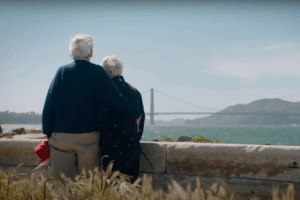In the past several months, Helen had started to notice a difference in her aging mother. She couldn’t quite put her finger on it, but it was as if Ira, who lived alone in her apartment at age 84, was finally starting to show the effects of aging more dramatically.
Once a lively, exuberant woman, Ira seemed to be quieter, more withdrawn, and constantly fatigued despite adding two hour-long naps into her daily routine. Not thinking much of it, Helen suspected that her mother’s body and mind were simply slowing down. But little did either of them know, Ira was struggling with depression.
The symptoms of depression aren’t always easily recognizable in aging adults who are suffering from it. In fact, it is common for depression to be misdiagnosed or overlooked—especially among older adults. Because of this, many aging adults suffer silently from depression and thus never receive proper diagnosis or treatment.
As a caregiver, it is important for you to be aware of elderly depression symptoms so that you can get your aging loved one the help they need. Let’s look at some of the common signs and symptoms of depression, as well as the common types of depression among aging adults, so that you can better understand and identify what your loved one may be going through.
Elderly Depression Symptoms to Watch for in Your Aging Loved One
The U.S. Centers for Disease Control and Prevention (CDC) estimates that as few as 1% of aging adults who live in the community suffer from depression. Those who live in nursing homes or are hospitalized experience depression at much higher rates, ranging between 11% and 14%. Unfortunately, few of these sufferers receive the care they need to improve their condition.
Like we saw with Ira and Helen, the reason depression so often goes unnoticed and untreated in older adults is that many of the symptoms of depression are so similar to the general effects of aging. Things like poor memory, low energy, and sleep problems are often overlooked, especially when older adults are also suffering from other illnesses. And because the incidence of depression is higher among aging adults living with other illnesses like cancer or heart disease, it is often mistaken as a natural reaction to the challenges of living with a disease.
Whether or not your aging loved one is facing significant health challenges or not, it is important to pay close attention to their mental state and watch for clues that indicate they could be experiencing depression.
Common symptoms associated with depression to watch for in your aging loved one include:
- Persistent low mood or sadness
- Anxiety or irritability
- Chronic low energy
- Persistent feelings of guilt, worthlessness, or hopelessness
- Decreased interest or enjoyment in activities
- Sleep problems—from insomnia to oversleeping
- Change in weight or appetite
- General physical malaise (especially digestive upset without cause)
- Lack of concentration
- Poor memory and frequent indecision
- Suicidal thoughts or suicide attempts
If you notice some or several of these symptoms in your aging loved one lasting for longer than two weeks, it’s important to talk with your aging loved one about seeking professional help from a qualified healthcare practitioner.
The Different Types of Depression
Depending on the number, severity, and duration of the symptoms mentioned above that your loved one experiences, it could indicate they are suffering from some type of depression. Having some general knowledge about the different types of depression could help you begin to identify what type of depression your aging loved one may be experiencing so that you can have an informed conversation with them and their healthcare provider.
Below are some of the types of depression that are common among aging adults:
Subsyndromal depression: This type of depression isn’t considered to be as severe as most other depressive disorders, though if left untreated, it can lead to a major depressive disorder. Many older adults who fail to satisfy the diagnostic criteria for depression outlined in the DSM-IV, the manual used by mental health professionals to diagnose mental disorders, are typically thought to have subsyndromal depression. Typically, aging adults will experience two or more symptoms of depression but do not experience a depressed mood or anhedonia (the lack of enjoyment from traditionally enjoyable activities). The symptoms that do present are often social or cognitive in nature. Withdrawing from family or friends and having difficulty concentrating are a few common examples.
Major depressive disorder (MDD), also known as clinical depression: Those who are diagnosed with MDD have symptoms that satisfy the criteria for the disorder in the DSM-IV. Criteria include, but aren’t limited to, those listed in the symptom list above, such as feeling sad or irritable for the majority of the day, a loss of interest in previously enjoyed activities, and persistent fatigue or lack of energy.
Persistent depressive disorder (PDD): When a low mood is chronic and endures for a period of more than two years, it is often categorized as PDD. While the criteria are similar to those of MDD, PDD tends to be less severe overall, although people suffering from PDD can go through periods of severe depression. Symptoms typically do not go away for more than a month at a time.
It is important to note that each of these types of depression should be treated in older adults. Depression that is left untreated is associated with an increased risk of suicide. In fact, aging adults over the age of 85 have the second highest incidence of suicide in the country.
Luckily, Helen was curious enough to do some research on depression among the elderly and decided her mother’s symptoms were concerning enough to seek help for her. Once Ira was diagnosed with PDD, she began psychotherapy and started her journey to better mental well-being—something each one of us at any age deserves.
At Institute on Aging, we offer a variety of resources and services for aging adults suffering from mental health problems, like depression. To learn more about how our psychotherapy services, Center for Elderly Suicide Prevention, and Friendship Line can help your aging loved one feel a greater sense of mental well-being, contact us today.







